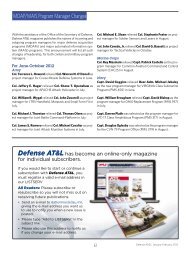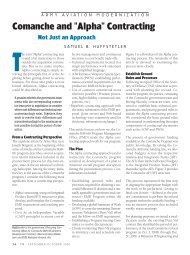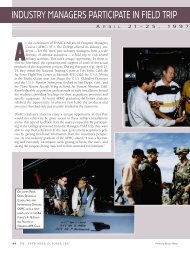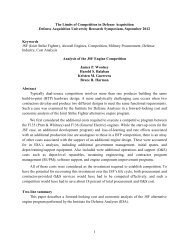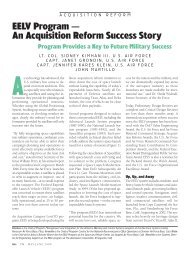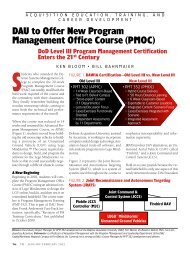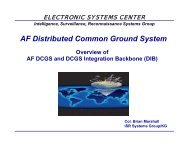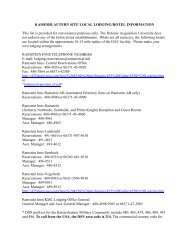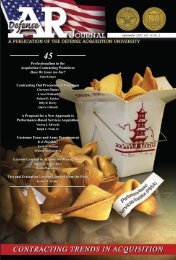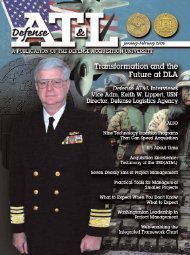Defense ARJ - Defense Acquisition University
Defense ARJ - Defense Acquisition University
Defense ARJ - Defense Acquisition University
Create successful ePaper yourself
Turn your PDF publications into a flip-book with our unique Google optimized e-Paper software.
PPBe: a reD or a Blue Pill?<br />
1995). The challenge in sensemaking is to treat experience and prior learning repositories<br />
(such as planning habits, doctrines, and rules) as theories for action that should<br />
be tried and tested continuously in search of new mental models (Argyris and Schön,<br />
1978).<br />
This phenomenological approach allows us to step back in a metaphysical way to<br />
examine the Pentagon-created world of PPBE. 4 As such, PPBE (based in the logical<br />
positivism of operations research and systems analysis) has become something akin<br />
to a cultural ideology in the DoD; witness where alternative types of decision making<br />
are disdainful if not incomprehensible (Paparone & Crupi, 2006). This ideology<br />
reflects an unquestioned belief, especially in numeric values or metrics, associated<br />
with an isolatable, predictable, and reproducibly testable cause- (ways and means)<br />
and-effect (ends) relationships. The rational discovery of these ends, ways, and means<br />
The common sense (prevalent social-psychological<br />
disposition) associated with René Descartes’ i th nk<br />
therefore i am, is replaced with the less common<br />
sensemaking premise of, i th nk therefore i mag ne.<br />
through technical processes is believed to be unbiased by emotions and unaffected<br />
by unethical political, cultural, and psychological values that would otherwise distort<br />
the results (Simon, 1997). Although the process has evolved to be a very complicated<br />
series of planned events and documentation, PPBE is essentially rooted in the<br />
sequential steps of the generic rational decision-making process, borrowed from the<br />
modern scientific method of hypothesis testing: (a) Define the problem (reducing the<br />
complicated to a manageable dependent variable); (b) present all facts and assumptions<br />
bearing on the problem (what affects the variable); (c) develop courses of action<br />
(COA) to solve the problem (search for the independent variable); (d) select the best<br />
COA based on objective criteria for analyses (how to make the independent variable<br />
more powerful in a reproducible way); and, (e) implement and provide feedback (analyze<br />
the results and report in preparation for the next cycle). This paradigm assumes<br />
problems can be defined in relative independence from other conditions through<br />
a process called reductionism. For example, in the DoD’s force management, the<br />
current practice is to reduce and categorize problems (treated as dependent variables)<br />
and associate them with potential funding of programmatic solutions in doctrine,<br />
organization, training, materiel, leadership, personnel, and facilities (the DoD’s list<br />
of standing independent variables). The fundamental belief is that the outcome of<br />
PPBE serves to argue, in a sterile sort of way, the case for obtaining and using public<br />
resources. In addition, through the PPBE lens, managers assume that problems of<br />
1 5 3



